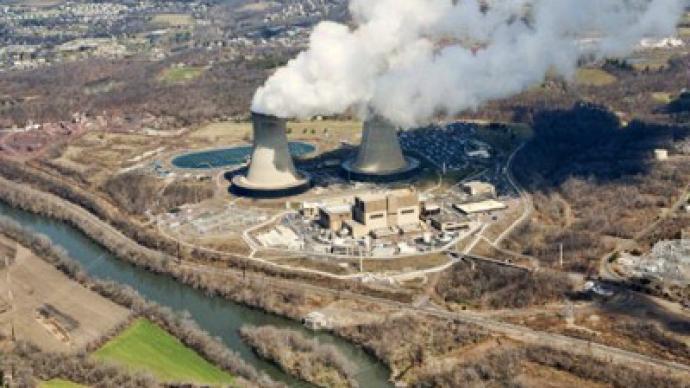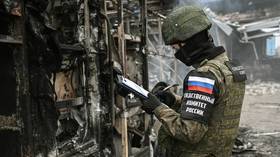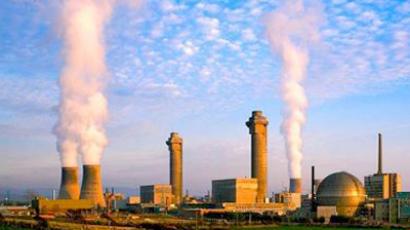Fires and floods threaten nuclear facilities

If you were to go ten miles out from each of the 65 nuclear power plants in the country, you’d find around four million Americans living within range of a catastrophic disaster. But what are the odds of one ever happening, right?
With a wildfire this weekend moving onto the property of the Los Alamos, New Mexico nuclear facility and an ongoing flood posing an immense threat to the Fort Calhoun station in Nebraska, not only might an epic incident be likely, but the fallout at a facility might be more damaging that previously determined.Last week the Associated Press reported that federal regulators have repeatedly weakened operating standards at the dozens of nuclear plants in America, yielding thousands of pages of documents exposing unsafe and, well, pretty scary conditions and practices. Regulators mapped out evacuation routes for the ten miles surrounding nuclear facilities back in 1978, but populations around the 65 plants have in some cases quadrupled in the 30-plus years since the roads were zoned for emergencies. Even after Three Mile Island, Chernobyl and Fukushima, safety standards have only become more lax and escape paths include the same two-lane roads in areas once rural that are now booming with businesses and residents.The US government says anyone within 50 miles of a nuclear site should be prepared to evacuate, but states are not required to plan escape routes outside of a 10-mile radius. In the case of the Indian Point complex 25 in New York state, Nuclear Regulatory Commission Chairman Gregory Jaczko tells the AP that the 10-mile rule is a “planning standard,” but, in case of an “unlikely event” of an accident, decisions would be based on circumstances. The NRC has also acknowledged that radiation releases can happen within only 30 minutes of an accident, yet it could take up to 12 hours for everyone within ten miles of Indian Point to get out of the contamination zone. When you look at the 50-mile radius surrounding the site, a whole new story opens up. Indian Point is within an hour’s drive of New York City, New Jersey and Connecticut, and that 50-mile radius includes around 17.3 million Americans — or around a sixth of the country’s population. To AP, Kelly McKinney, New York City's deputy commissioner of preparedness, says, "At no time in the history of man has anyone tried to move 17 million people in 48 hours."A report from last week shows that, to some degree, three-quarters of the 65 nuclear plants in the country have at one time leaked radioactive tritium, sometimes into the groundwater.Since a fire encroached onto the Los Alamos property on Sunday night, the New Mexico nuclear plant has since activated its emergency operations and cut natural gas to some areas as a precaution. The plant, which is now within the 68 square miles of a wildfire that continues to swell, was founded in World War 2 to develop the first nuclear weapons in the world.At the Shearon Harris facility in New Hill, NC, The Daily Beast rates the plant in the bottom third when it comes to relative safety of the 65 plants country-wide. They estimate that up to 40 hurricanes will pass through within the next decade, noting that up to 15 tornadoes ripped through the vicinity during the last century. New Hill is only 20 miles from Raleigh, where over 2 million people live in the city’s greater region. The plant was last issued an operating license in 1986, but the population in the area has quadrupled between 1990 and 2010.In Oyster Creek, New Jersey, the 135,738 residents within ten miles are all expected to be herded down what the state senator called “a two-lane cow path” in event of a disaster. To the AP, resident Janet Tauro says bluntly, "Picture me with my son on his BMX bike and my daughter at dance class, multiply me by 100,000 — and you have pandemonium." Since 1980 that town’s population has increased by 269 percent.















